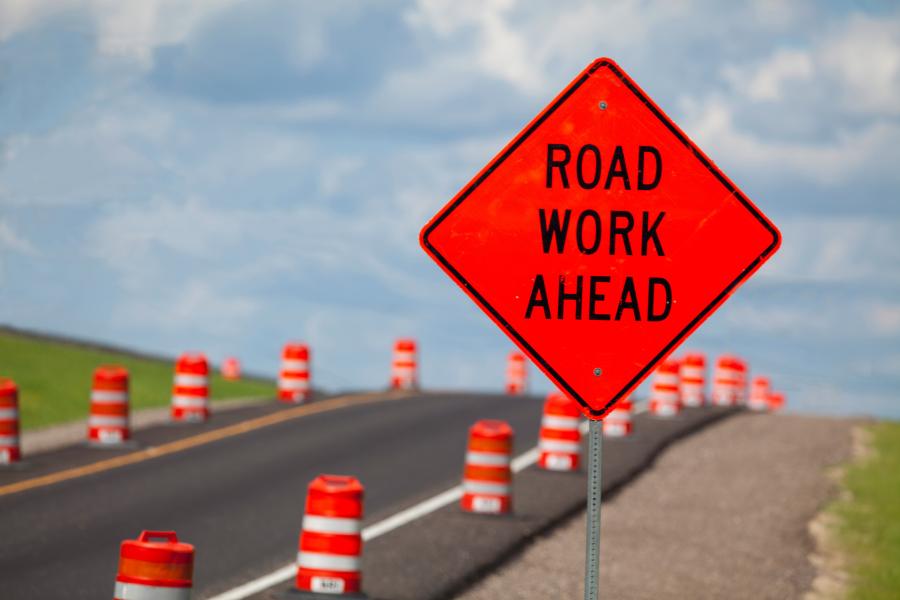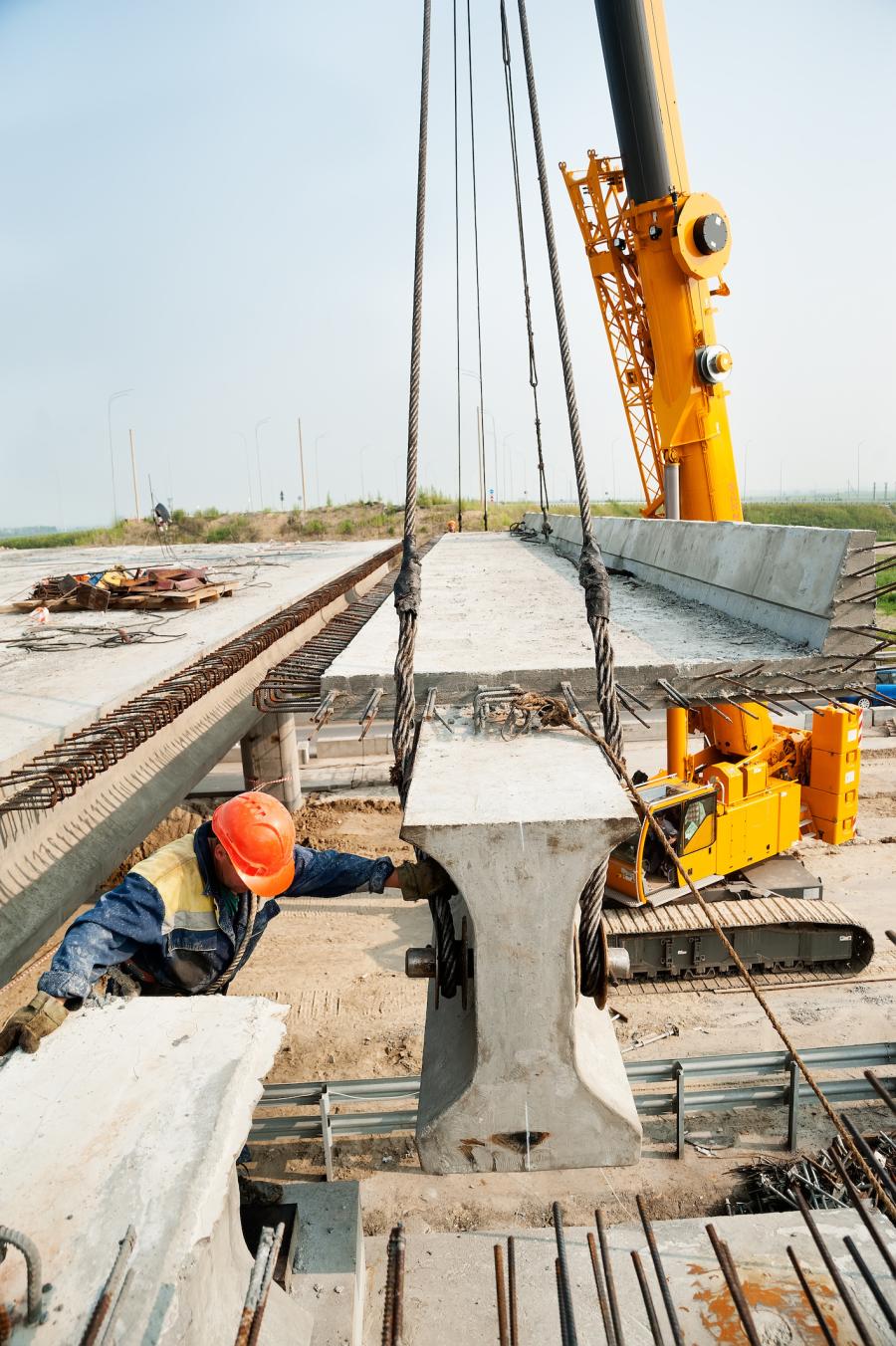Adobe stock photo
Adobe stock photo
Though public spending on road construction is projected to increase by double digits again this year, contractors are cautious about this year's business prospects. Given the continued challenges facing the construction industry in logistics logjams, labor shortages and rising interest rates, the overall mood is "decidedly mixed."
ARTBA reported that the public highway, pavement and street construction sector is expected to see double-digit growth for the second year in a row.
The association said funding will increase 16 percent to $126 billion this year, up from $108.6 in 2023.
In her annual market outlook, ARTBA's chief economist, Alison Premo Black, pointed to two factors in the sector's growth in activity.
"After two years, many of the projects supported by the IIJA are in the construction phase," she said. "Many states are increasing their own revenues to match federal funds and make additional transportation investments."
She said states are making the most of a combination of general fund transfers, bond issues, business taxes and other user-fee increases.
ARTBA reported the total value of overall transportation construction work, including highways, will grow 14 percent from $187 billion in 2023 to $214 billion in 2024.
"This is in line with other market indicators, including ARTBA's analysis of state DOT budgets," said the association. "State DOTs plan to increase highway and bridge capital spending by 13 percent in fiscal year 2024."
Contractors Plan to Wait, See
AGC members responded to the association's most recent business outlook survey with mixed reactions.
Citing the challenges contractors face and the types of technology they may or may not embrace this year, AGC's survey partner Sage said respondents have challenges to overcome.
"Contractors are still struggling … with significant labor shortages … higher interest rates and a supply chain that, while better, is still far from normal," the survey found.
Stephen Sandherr, association CEO, said 2024 offers "a mixed bag" for construction contractors.
"On one hand, demand for many types of projects should continue to expand and firms will continue to invest in the tools they need to be more efficient," he said. "Meanwhile, they face significant challenges when it comes to finding workers, coping with rising costs and weathering the impacts of higher interest rates."
The survey found that the shift in demand for different types of projects is significant. AGC members are less confident about growth prospects this year.
The survey results found respondents most optimistic about a range of public-sector market segments but see less-robust private sector demand.
The Sage-AGC survey found contractors have "tempered" last year's high expectations for new investments in infrastructure.

Adobe stock photo
"Nowhere did contractors' expectations for growth in a market segment drop more … than in the highway and street and other transportation construction," according to AGC.
While a few firms got work because of new federal investments, a growing number have found they're hamstrung by the federal review process and new Buy America rules.
As a result, the benefits to them from these new federal funds for transportation are actually limited.
"While contractors remain mostly upbeat, their top worries for 2024 include fears about the impacts of higher interest rates on demand for construction," said AGC.
Members also are worried about what a possible recession would do to the economy. Contractors continue to be concerned about workforce shortages and their impacts on construction prices and schedules, the association reported.
"And they continue to see projects being delayed — sometimes indefinitely — because of rising costs, slower schedules and shrinking demand for finished products.
How Survey Results Shake Out
The survey noted the number of respondents who expect the dollar value of projects to expand is positive again this year for 14 construction categories.
"On balance, contractors remain upbeat about the available dollar value of projects to bid on in 2024," said Ken Simonson, the association's chief economist.
However, AGC found a smaller share expects the markets they compete in to expand this year.
"The optimism regarding opportunities for most project types is less widespread than it was a year ago," added Simonson.
The numbers decreased from the 2023 survey for nine project types, increased for six types and remained unchanged for two.
Water and sewer construction received the highest net positive reading, at 32 percent. The category "nosed out" last year's leaders.

Adobe stock photo
Highway and bridge as well as transit, rail and airport transportation construction saw the highest share in 2023. Federal projects are at 29 percent.
"The highest expectation among predominantly private-sector categories is for power projects, with a net reading of 25 percent," reports AGC.
Further, nearly two-thirds of survey respondents said projects they were involved with have been postponed or canceled. Almost as many reported projects were postponed or canceled last year and not rescheduled as did those whose projects were postponed but rescheduled.
The survey found 10 percent have already experienced postponement or cancellation of a project that had been scheduled for the first half of this year.
AGC said only 23 percent of respondents have not had any significant supply-chain problems.
"However, sixty-four percent noted that rising interest rates or financing costs are one of their biggest concerns for 2024," said the association.
And 63 percent listed insufficient supply of workers or subcontractors and 62 percent are worried about the likelihood of an economic slowdown/recession.
In addition, 58 percent listed rising labor costs (pay, benefits and employer taxes); 56 percent pick worker quality; and 54 percent list materials costs as major concerns.
AGC members said they plan to invest in new technologies as a means of more efficient and productive operations. New or bigger investments in drones, AI tools and offsite production operations are on the books.
Nearly 40 percent of firms say they will either increase their investment in drones (26 percent) or make an initial investment (14 percent).
And 30 percent of firms will make an initial investment (19 percent), or increase their investment (11 percent), in AI.
Finally, almost 30 percent plan to make more use of (21 percent), or start to use (9 percent), offsite production.
"Technology has played an instrumental role in helping construction firms build more efficiently while navigating current challenges," said Dustin Stephens, Sage vice president of construction and real estate. "In this era of digital transformation, technology serves as a cornerstone for sustained growth and success."
He noted nearly all firms plan to increase or keep level their investment in software, most likely accounting and project management products.
Close behind is document management software, cited by 36 percent of firms. Also, many firms will continue spending on IT tools designed to streamline accounting, project management and other back-office functions.
"But even as firms make these investments, many worry that they lack the time and personnel to properly implement and train for these new technologies," found AGC.
Simonson noted that more than two-thirds of the respondents expect to add staff, compared to only 10 percent who expect a decrease in worker numbers.
While just under half expect to increase their headcount by 10 percent or less, nearly one-quarter anticipate larger increases, he said.
"However, seventy-seven percent of respondents report they are having a hard time filling some or all salaried or hourly craft positions," he added. "The majority expects that hiring will continue to be hard or will become harder."
Most firms reported that they'd made adjustments last year to attract and retain workers. In fact, 63 percent increased base pay rates more than in 2022, while 25 percent provided incentives or bonuses. And 24 percent of the firms increased their portion of benefit contributions and/or improved employee benefits.
The association concluded 2024 offers "a mixed bag" for construction contractors. And, the association found, firms will continue to invest in the tools they need to be more efficient, productive and profitable.
"Yet contractors are less enthusiastic about most market segments than they were at the start of 2023."

Adobe stock photo
At the same time, significant challenges in finding workers, coping with rising costs and weathering the impacts of higher interest rates, are unavoidable.
The association concluded that many of the challenges contractors are facing depend on the actions of public officials to address.
"If the Biden administration were to act on Congressionally mandated permitting reforms, many more infrastructure and construction projects would start this year, countering the small impact those investments have had to date," said Sandherr.
He also hit on the five-to-one funding gap between college-prep programs and career and technical education.
"If public officials would narrow [the gap], more students would be exposed to construction and would likely pursue careers in the field."
Sandherr said AGC will continue to urge the Biden administration to implement mandated reforms to the federal review and permitting process.
He wants assurance "the federal government no longer serves as the biggest obstacle to its own construction investments."
The association will be pushing for new funding for construction education and training programs, he added. He wants the programs a part of this year's Workforce and Innovation Opportunity Act and the Pell Grant reauthorization legislation.
"We are committed to working with policy makers and our members to make sure the conditions are right for firms to be successful in their efforts to improve the nation's infrastructure, modernize manufacturing and build an even stronger economy," Sandherr added. CEG
Lucy Perry
Lucy Perry has 30 years of experience covering the U.S. construction industry. She has served as Editor of paving and lifting magazines, and has created content for many national and international construction trade publications. A native of Baton Rouge, Louisiana, she has a Journalism degree from Louisiana State University, and is an avid fan of all LSU sports. She resides in Kansas City, Missouri, with her husband, who has turned her into a major fan of the NFL Kansas City Chiefs. When she's not chasing after Lucy, their dachshund, Lucy likes to create mixed-media art.
Read more from Lucy Perry here.
Today's top stories


















